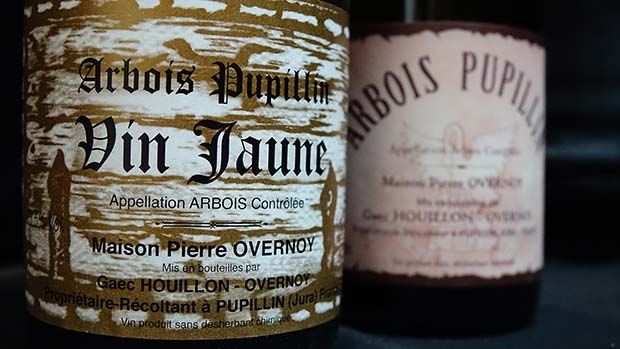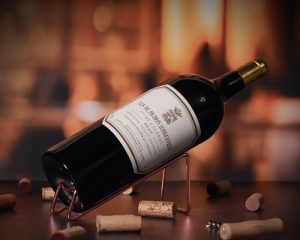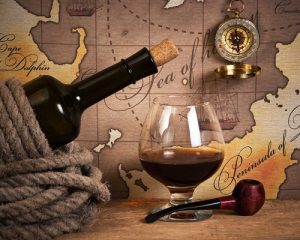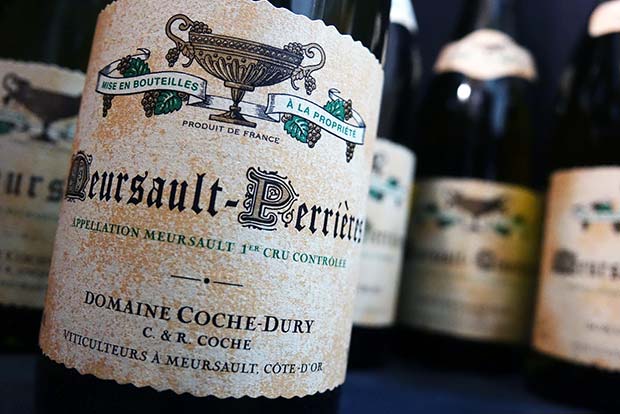
Of all France’s wine regions, the Jura has changed most in recent years. Some vintages fetched record prices at our last auction, but for wine lovers fed up with soaring prices it as an ever more popular alternative to other regions.
Fasten your seat belts. A bottle of 2000 vin jaune from Domaine Overnoy sold for €1,032 at iDealwine’s auction on November 16. This is a record! But however well a few savvy wine lovers may know and appreciate this estate, we are still a little surprised. Most people think of vin jaune when you mention Jura wines. And at this same auction, a lot of 1978 Vigne aux Dames from Domaine Perron sold for €528 a bottle, more than double its starting price.
Is this a sign that Jura wines are finally getting the recognition they have long deserved? A little bit, no doubt. However, this success is also down to a better understanding of wines that have been somewhat off the radar for enthusiasts for many years.
For the majority of wine lovers, the Jura is best known for its odd, unworldly-tasting, oxidative wines (the infamous vins jaunes, and the flagship Château-Chalon appellation). We must accept that oxidative wines are in a class of their own and not always easy to get along with. You either love them or hate them. Often, people who dare take the plunge become real fans of their distinctive nutty taste. But, they will always be in the minority.
The problem is exacerbated by the fact that what winegrowers call their “tradition” vintages are often a blend with a majority of oxidative Savagnin and a minority of equally oxidative Chardonnay. If you had not been forewarned, and were to buy a bottle of Côtes du Jura white from a well-known producer such as Jean Macle, you would no doubt get a shock if you tried to drink it with a fish dish. There is nothing to suggest it on the label, but this wine is distinctly oxidative – perhaps less so than a vin jaune or Château-Chalon, but enough for typical white wine pairings to no longer apply!
In reality, not all casks destined to become vin jaune will do so. This only happens when a miraculous film, or “voile”, of dead yeast and bacteria gradually forms on top of the wine. Normally, unless topped up (a process known as “ouillage”), wine reduces in volume through natural evaporation. The voile stops the wine from becoming too oxidated and allows a process known as “controlled oxidation” to take place. After six years and three months, the result is the infamous vin jaune.
If the voile tears, the producer has no choice but to bottle the wine so it doesn’t become oxidised in the bad sense of the word. This incomplete vin jaune is therefore withdrawn, usually blended with a little Chardonnay and used for Côtes du Jura.
The Jura used to produce a high proportion of oxidated wines. These were much appreciated by loyal customers who adored these types of aroma. Unfortunately, they put the majority of wine lovers off. The area has in fact always produced many “normal” white wines as well, usually from Chardonnay. However, most enthusiasts wouldn’t even try these wines, convinced that they too would be oxidated. This overriding impression is undoubtedly a reason why Jura wines have not reached a more traditional clientele.
Ouillage
Now though, and for almost 20 years, the situation has changed considerably. Aware that traditional techniques limit their ability to sell their wines, many growers practise “ouillage”. In other words, they produce and age their casks of Savagnin in the usual way for white wine, topping them up as and when levels drop due to evaporation. In any other wine region, no-one uses the term “ouillage” because it is a natural stage in the production process (for red and white wine) to stop the wine oxidising in the barrels. In the Jura however, producers have to make the distinction! Today, a Jura wine estate’s typical range will include several types of red wine depending on the grapes available (Poulsard, Trousseau, Pinot Noir) and several types of white, usually with at least one Chardonnay, one Savagnin “ouillé” and one oxidated wine(vin jaune or otherwise). Some estates produce a number of varieties of each type of wine depending on their terroirs and interests.
These changes have been accelerated by the arrival of a new generation of wine producers who have quickly become stars with the most discerning wine connoisseurs. The best-known of these are Stéphane Tissot and Jean-François Ganevat. Their growing and producing talents have brought many excellent Chardonnays to the attention of wine lovers. The quality of these wines equals (and in some cases exceeds) a number of prestigious Burgundy appellations produced from the same Chardonnay grape. As is always the case, these two trailblazers have paved the way for a new generation of wine producers who have turned away from traditional oxidative techniques to make excellent wines from Chardonnay and Savagnin (ouillé). Good examples of this are the Labet, Pignier, de La Tournelle and Buronfosse estates, or, even more recently, Les Bottes Rouges (Jean-Baptiste Ménigoz), La Borde (Julien Mareschal), Ratapoil (Raphaël Monnier) and Cavarodes (Étienne Thiébaud). Almost all these estates practice organic or biodynamic techniques. This has opened up a specialist clientele to them that is often at the forefront of the most discerning wine lovers.
These new producers are now well established and known primarily, if not exclusively, for their white wines made from Chardonnay and Savagnin (ouillé) and their red wines from the three varieties. They are hardly known at all, or are significantly less known, for oxidative wines, which they tend to produce in very limited quantities, if at all. The only estate to have kept a true tradition of oxidative winemaking is Stéphane Tissot who produces three vins jaunes and a Château Chalon. It is fair to say though that of the 35 different wines he produces each year, the proportion of oxidated isn’t huge.
New investors
A final sign of the Jura’s growing success as a wine area is the arrival of major investors who have taken over estates and companies that were struggling to find a family or local successor. Most these investors come from neighbouring Burgundy, perhaps attracted by the two grape varieties they share with their mountain dwelling neighbours – Chardonnay and Pinot Noir.
The well-known Domaine du Marquis d’Angerville has taken over a number of small estates in the Arbois region and created Domaine du Pélican. It has also been growing wine on a large number of parcels in the historic Jacques Puffeney estate. The other investor is a very large Burgundy wine group – Boisset (30 labels in Burgundy including Mommessin, Bouchard Aîné et Fils and Domaine de la Vougeraie, and operations in almost 80 countries!). The group recently took control of Henri Maire, one of the largest and most historic producers in the Jura.
With a dynamic new generation of producers and major investment from Burgundy, the Jura seems to be on a roll. And connoisseurs know they can find superb wines here, with a distinctive character, at prices well below the peaks achieved by wines from other more sought-after regions. A few emblematic bottles might have gone through the roof at the auctions, but although spectacular these are the exception!
See all wines from Jura on sale
Lookup a price estimate for a wine
Read further on iDealwine Le Blog:
- Auction Report: October, Haut Brion 1989, Chateau Chalon, top Champagne
- Auction Report: September, Clos Rougeard breaks more world records
- Auction Report 10 & 31 August: summer trends
- Auction Report 20 July: collectable Côte de Nuits from Noellat and Clair-Dau
- Auction Report 15 June: mature vintages from top Burgundy estates on the rise
- Auction Report 1 June: marked success for the big names from the Rhône
- Auction Report 25 May: Top Alsace & Rhône: La Chapelle 1961
See all wines currently on sale
Register here to access auctions and fixed-price sales



